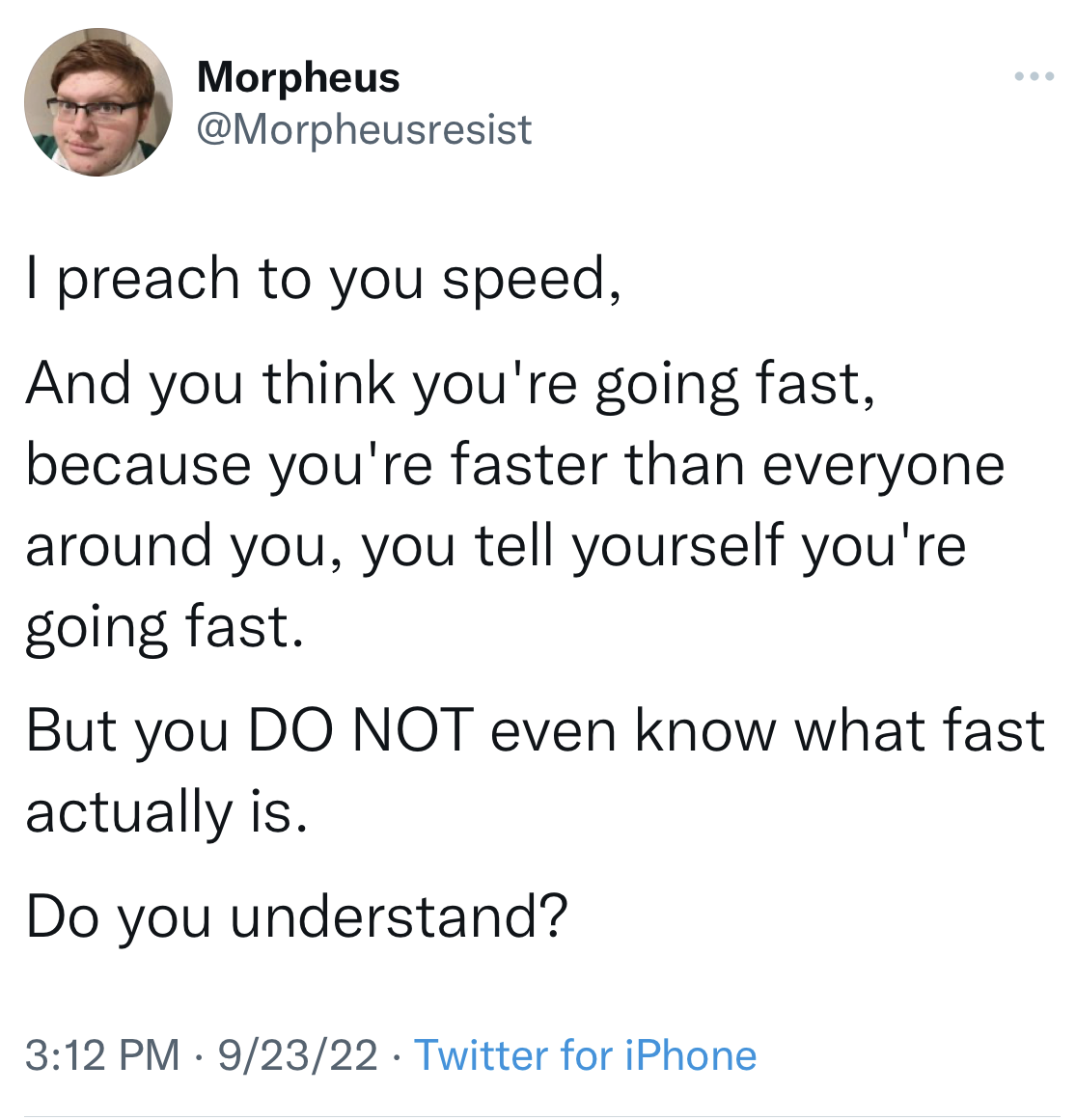I was just onboarding the new head of my high school org and it quickly became obvious that many things are important when leading an organization. Various factors indicate whether an organization is on the right track, but it's easy to forget when hit with all the input. I was able to distill it down to one thing: speed.

Even if people on the outside think an organization is moving fast, the second derivative might be negative. The most important metric is peoples' perception of speed on the inside. Speed seems to have strong inertia. If a leader moves slowly, then employees move slowly, then the leader gets discouraged, then employees get discouraged, and a vicious cycle starts. The opposite is true for moving fast.
Every organization I've led had a slow equilibrium: it moved fast if I pushed very hard against the current. I think there's a theoretical inflection point where the equilibrium moves to a fast point—but only after a sufficient proportion of the member network move fast individually. That way, even if people slow down, they get motivated to speed up out of mimesis after looking around. Part of that is hiring high-agency, smart people. But I think first impressions are more important.
If your first week at a company is super slow then you'd probably set your baseline to moving slow. Instead, if it was very fast — like if you had to ship something Day 1 — then the expectation would be set.
If insiders think its moving fast, it probably is. And it's probably going to win. But it's still not fast enough (That's what I tell myself)
My high school Sci and Eco club moved pretty slowly. Beyond Terra moved pretty slow after we scaled. The Cornell Data Journal had some parts move fast (with my heavy pushing—against equilibrium) but most of the organization moved slowly, despite my best efforts fighting the e-board. (Couldn't go prophet-mode) Verdus is moving very fast but I need to keep pushing to keep it going. We'll see if this experiment works.
